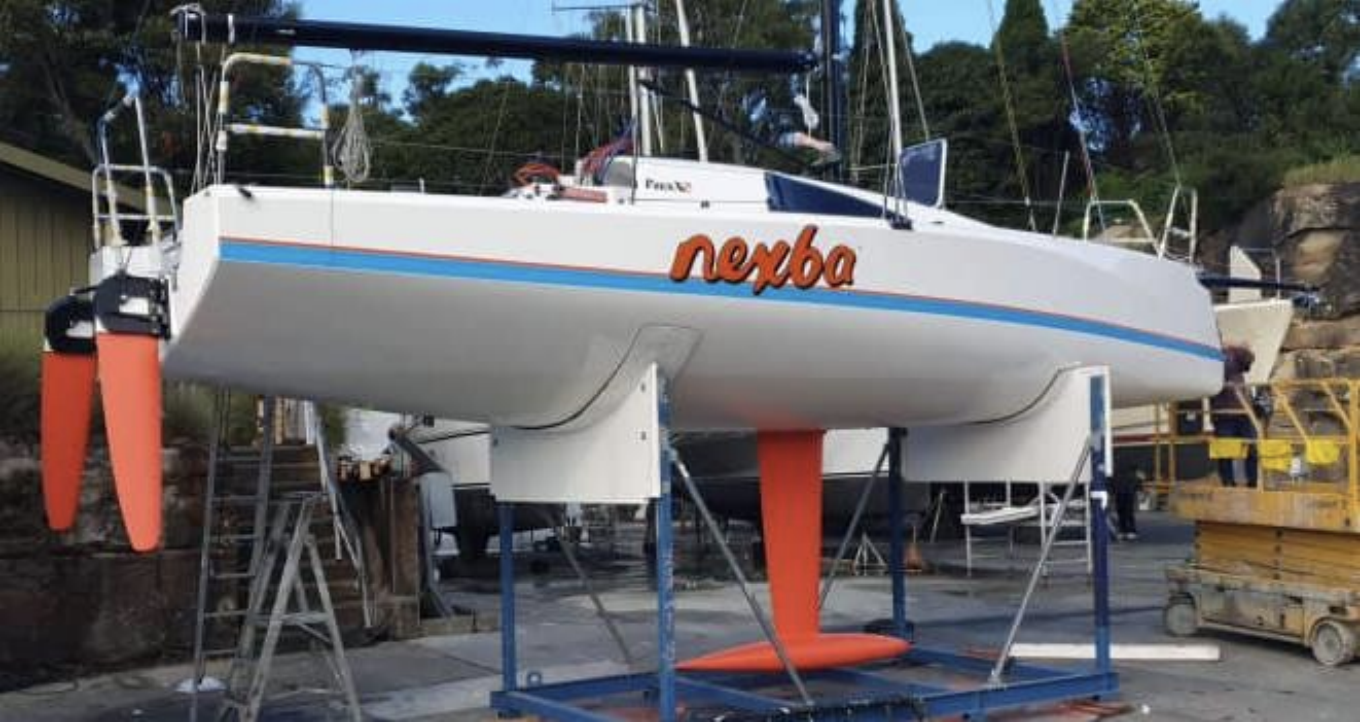Unanswered Questions: Nexba's Lost Keel
“Safety Moments, presented at CCA Stations and Posts”
By Chuck Hawley, San Francisco Station, November 2023
The news reports that came to our attention around July 2 of last year seemed all too familiar: a modern boat, sailing in moderate conditions, had lost its keel, resulting in an immediate capsize, and the eventual safe rescue of the vessel’s co-skippers. As additional information about the incident was reported, there were a number of twists that begged for more information. The doublehanded crew were participating in a pre-race qualifying sail off the coast of Eastern Australia, from a harbor north of Sydney, to a turning point south of Sydney. The vessel was a three month old Farr X2 race boat, NEXBA, hull #1, designed for double-handed racing. Since the boat’s arrival from Indonesia (she was built by XSP, Extreme Sailing Projects) the crew had participated along with boat yard workers and specialists to prepare the boat to be sailed, and then to be raced. This process had taken approximately three months, as minor details were attended to as one would expect with any new boat, especially Hull #1.

NEXBA was well-equipped, as the eventual incident report from the Royal Prince Alfred Yacht Club documented. The report goes into exhausting detail about the safety inventory, where it was stored, what was carried on each individual, and any issues regarding its performance. The combination of both personal gear, carried in foul weather gear pockets or “bum bags”, plus the vessel’s gear, should have allowed the crewmembers to alert rescue agencies, or nearby vessels, shortly after the boat capsized around 0115 on July 2. However, for a variety of reasons, the majority of the gear was rendered unless due to the capsize. This was due to several compounding conditions:
- Due to an impending change of watch, one of the co-captains was below in the cabin, and had stripped off much of her gear so she could don different gear. This included her bum bag which included a personal AIS beacon and a PLB. When the boat inverted, she was unable to locate her personal safety gear.
- Gear in the boat moved from its stored location(s) to the underside of the deck and cabin top. This made it increasingly difficult to exit through the companionway. As this occurred in the middle of the night, there was very little light by which to identify items and navigate the interior of the vessel.
- Water filled the cabin very quickly and did not result in air pockets so the co-captain’s time was severely limited. She was forced to exit the inverted cabin to find her way under the lifelines and to the surface.
- The co-captains made several attempts to dive under the inverted boat to retrieve safety items, like the vessel’s EPIRB, but were unable to find key items while swimming.
The report goes into detail about the failure of the captain’s PLB, the loss of safety equipment while trying to hold on to the inverted boat, and the difficulty that the crew members had in getting out of the water to reduce their heat loss and to be able to keep a better watch. Miraculously, the device which eventually summoned aid was an cellular-capable Apple Watch, which was able to raise emergency services after the pair had spent about 12 hours either huddled on the stern clinging to the twin rudders, or clutching the Saildrive in the center of the inverted hull.
What’s missing from the 30 page report is any description of the keel attachment, and the likely sequence of events that led to the loss of the keel. One would hope that a complete analysis of how the keel could be lost after only three months of sailing would be forthcoming, but so far there’s no mention of an addendum to the current report. This goes directly against the work that World Sailing has done to increase the transparency of incident reports so that all sailors can learn from the reports, including a database of keel failures (close to 100 in all) that goes back to the early 1980s.
What is clear is that there was either an assembly error, or a materials issue, or a design issue that allowed the keel on a brand-new boat to separate from the hull and put two sailors in peril. Thanks to their level headedness, their physical strength, and their inclusion of an Apple Watch in their personal kit, they were rescued so that they could sail another day. The rest of us should encourage World Sailing and Australian Sailing to publish a report on the nature of the failure so that our sport can benefit from what is learned.
Personal note: I was the skipper of a 67’ Transpacific Race boat that lost its keel about 300nm from land while returning from Hawaii to California 40 years ago. We were lucky; the boat did not capsize, and we were able to return to Waikiki in two days under power. While frightening, the story had a happy ending. In our case, the causes of the keel loss were widely discussed and undoubtedly resulted in more care when attaching keels to race boats.
The Cruising Club of America is a collection of accomplished ocean sailors having extensive boat handling, seamanship, and command experience honed over many years. “Safety Moments” are written by the Club’s Safety Officers from CCA Stations across North America and Bermuda, as well as CCA members at large. They are published by the CCA Safety and Seamanship Committee and are intended to advance seamanship and safety by highlighting new technologies, suggestions for safe operation and reports of maritime disasters around the world.






